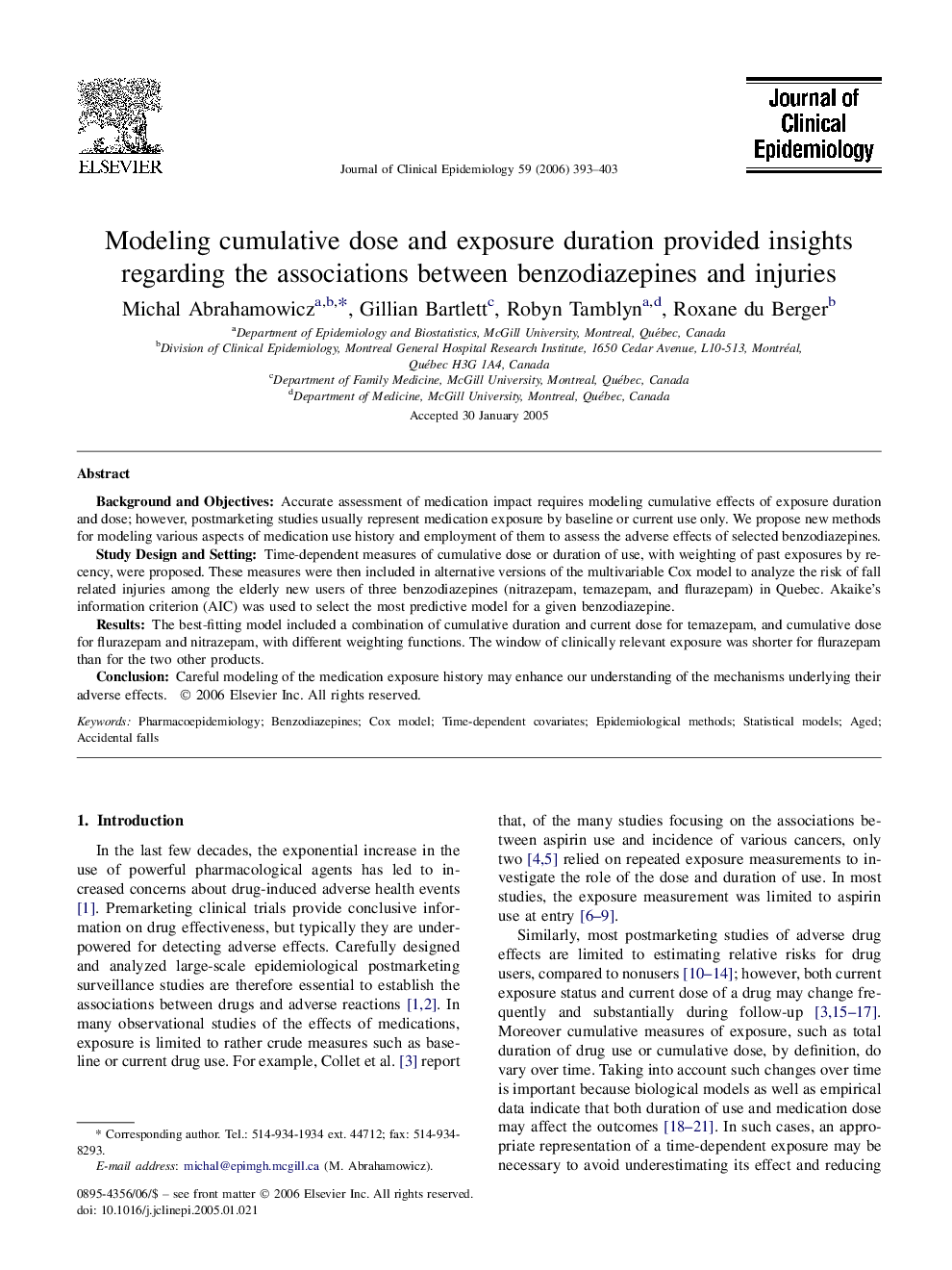| Article ID | Journal | Published Year | Pages | File Type |
|---|---|---|---|---|
| 1083322 | Journal of Clinical Epidemiology | 2006 | 11 Pages |
Background and ObjectivesAccurate assessment of medication impact requires modeling cumulative effects of exposure duration and dose; however, postmarketing studies usually represent medication exposure by baseline or current use only. We propose new methods for modeling various aspects of medication use history and employment of them to assess the adverse effects of selected benzodiazepines.Study Design and SettingTime-dependent measures of cumulative dose or duration of use, with weighting of past exposures by recency, were proposed. These measures were then included in alternative versions of the multivariable Cox model to analyze the risk of fall related injuries among the elderly new users of three benzodiazepines (nitrazepam, temazepam, and flurazepam) in Quebec. Akaike's information criterion (AIC) was used to select the most predictive model for a given benzodiazepine.ResultsThe best-fitting model included a combination of cumulative duration and current dose for temazepam, and cumulative dose for flurazepam and nitrazepam, with different weighting functions. The window of clinically relevant exposure was shorter for flurazepam than for the two other products.ConclusionCareful modeling of the medication exposure history may enhance our understanding of the mechanisms underlying their adverse effects.
